They say that all you need is love, but for us, a little scuba diving every now and then doesn’t hurt.
This Valentine’s Day we want our love for scuba diving to inspire you to get into the water and enjoy the world below. Whether you live in the sunny Caribbean or the high north, there is something beautiful and magical resting just beneath the waves. After several years abroad, scuba adventure has been our middle name and thanks to our nomadic travel we have put together a list of diving destinations that we LOVE.
So the big question is; where will your love for scuba diving take you?
First off, a confession. I love diving Bonaire. Why? For a couple of reasons.
Number one – the reefs around the island are still in superb shape. Not a lot of ocean-going pelagics it’s true but I’ve been diving the reefs of the Carribean for more than a couple of years and I would rank Bonaire as top two. The second reason is the shore diving. I can grab my mask and dive gear at any point during the day and not be tied to a dive boat’s agenda.
What’s not to love? As a result, I’ve visited Bonaire twice in the past year, and every time I go I seem to find more reasons to fall head over fins in love with this Dutch Antillies islands just off the coast of Venezuela.
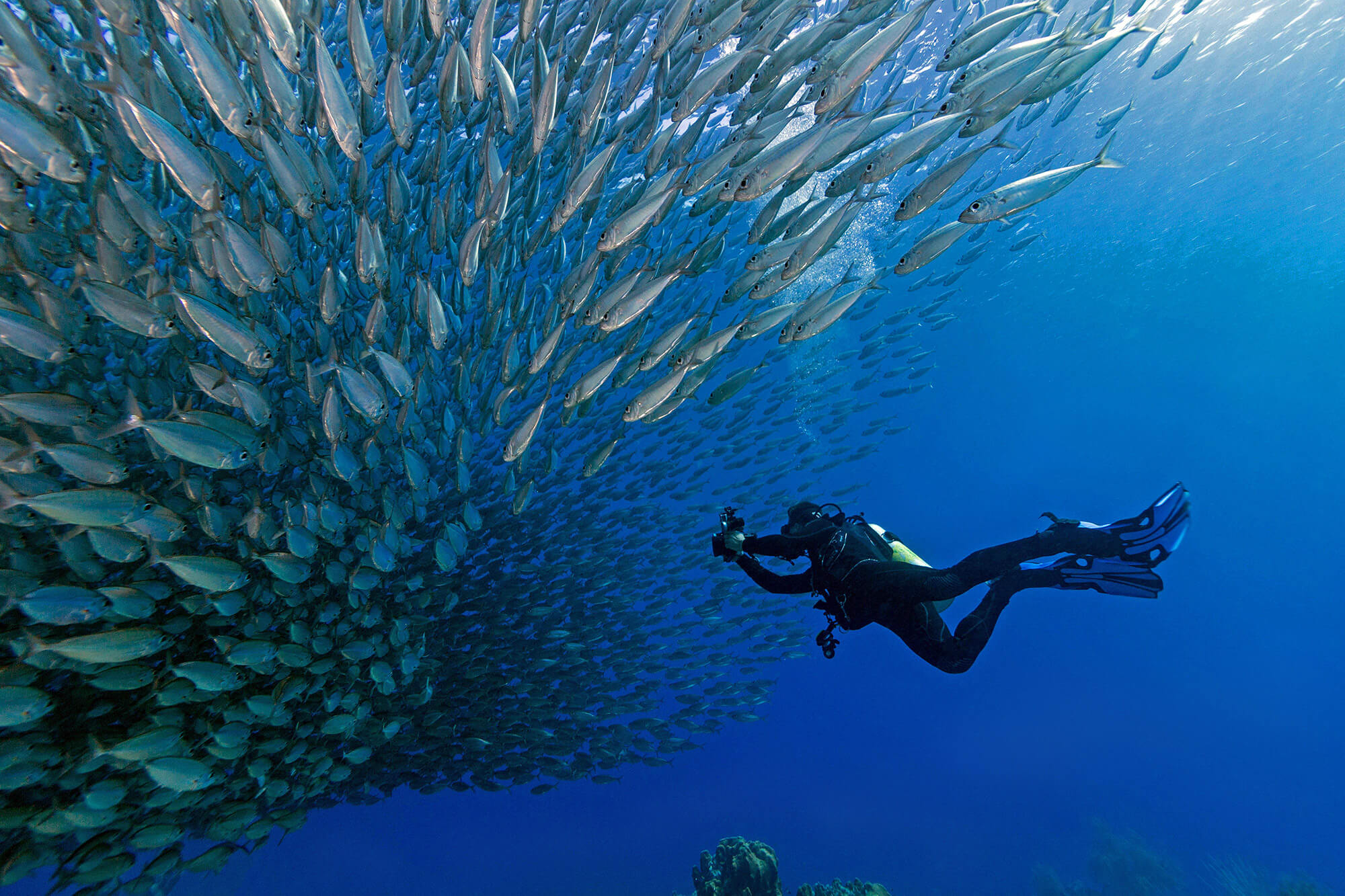
Find out more about Scuba Diving in Bonaire:
Submerge yourself into Bonaire’s underwater world with this ultimate scuba bucket list. It will leave you wanting more from the coral capital of the Caribbean.
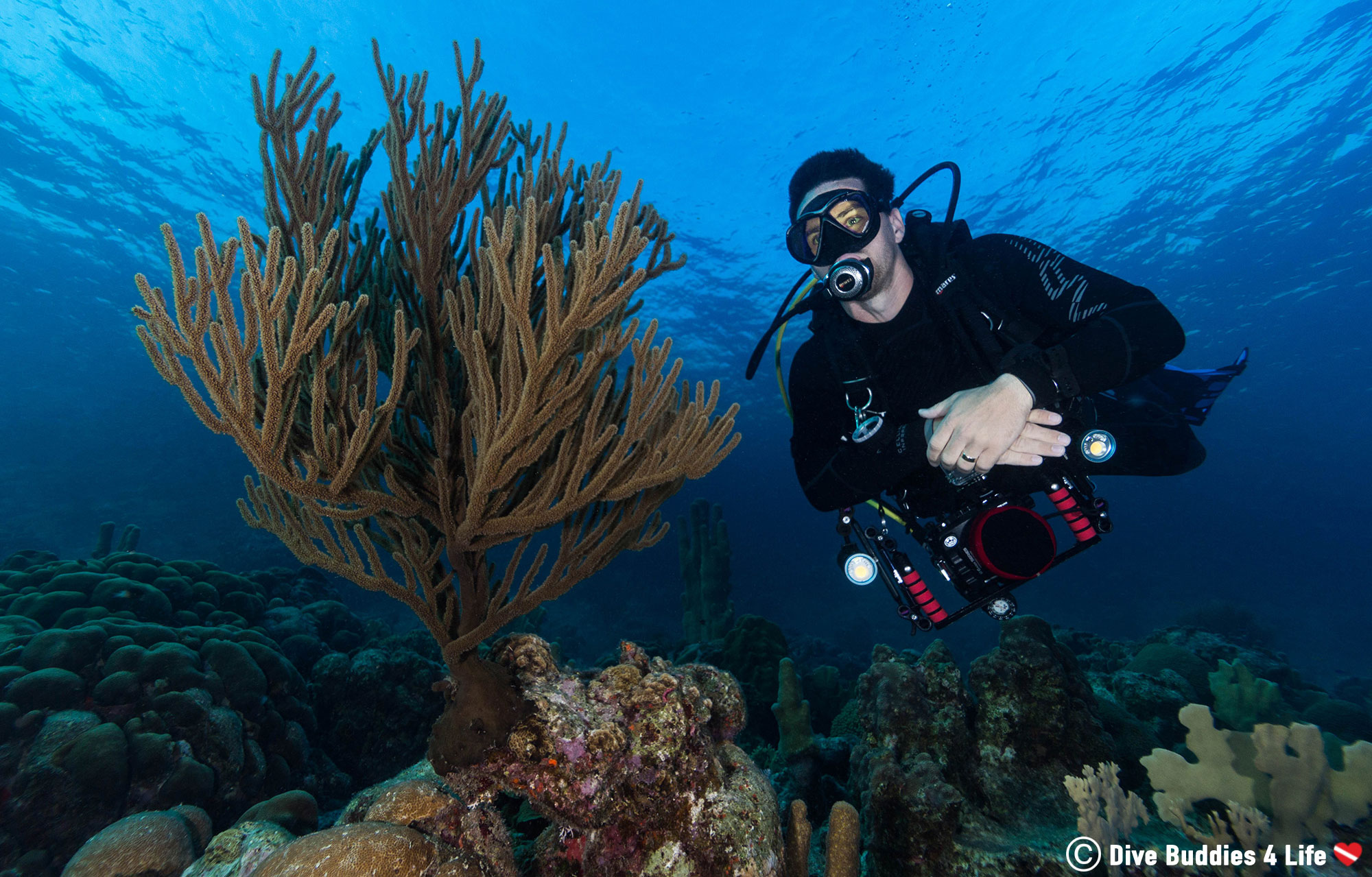
Where the houses are like jelly beans and visitors are treated like long-lost family, the maritime province of Newfoundland is another dive destination we love. Resting at the most easterly point of Canada, where the cold Labrador current meets the warm Gulf stream creating one of the most productive fisheries in the world, Newfoundland’s coastline stretches more than 29,000 kilometers on the cusp of the frigid North Atlantic.
Thanks to pristine water clarity and it’s prosperous iron ore mining history, Newfoundland is a one-of-a-kind place that attracts scuba divers from all over the world, looking to dive and experience this slice of Canada. As a part of our Canadian Splash scuba diving endeavor, Joey and I spent several weeks in Newfoundland where we enjoyed scuba diving the famous Bell Island shipwrecks as well as some intriguing shore locations along Conception Bay. It was positively magical.

Do you enjoy cold water wreck diving?
Newfoundland aims to please. Read up on scuba diving the famous World War II ships of Bell Island and experience some of the best wrecks on the Canadian east coast.

The first time I went cavern diving in Mexico I was completely blown away. It was like stepping into a completely different world.
Cave and cavern diving is not for the faint-hearted. It’s dark, it’s enclosed and at times it can be a tad claustrophobic. But if you are brave enough to take a step into the darkness, a place of awe and wonder awaits. While fish and marine life are the things that once fuelled my love for scuba diving, caverns have pushed me outside of my comfort zone – and in that zone, I have sparked a new and unruly passion.
The Yucatan Peninsula is famous around the world for its many caves and caverns where past civilizations communicated with the gods. Their existence is as much a defining characteristic of the region, as is guacamole or spicy cuisine. It is estimated that over 6000 cenotes are spread across the Yucatan Peninsula. Some are easily accessible while the crystal-clear water of others is nestled deep into the jungle. For scuba divers, these windows into Mexico’s subterranean waterways are ideal for cavern and cave diving.
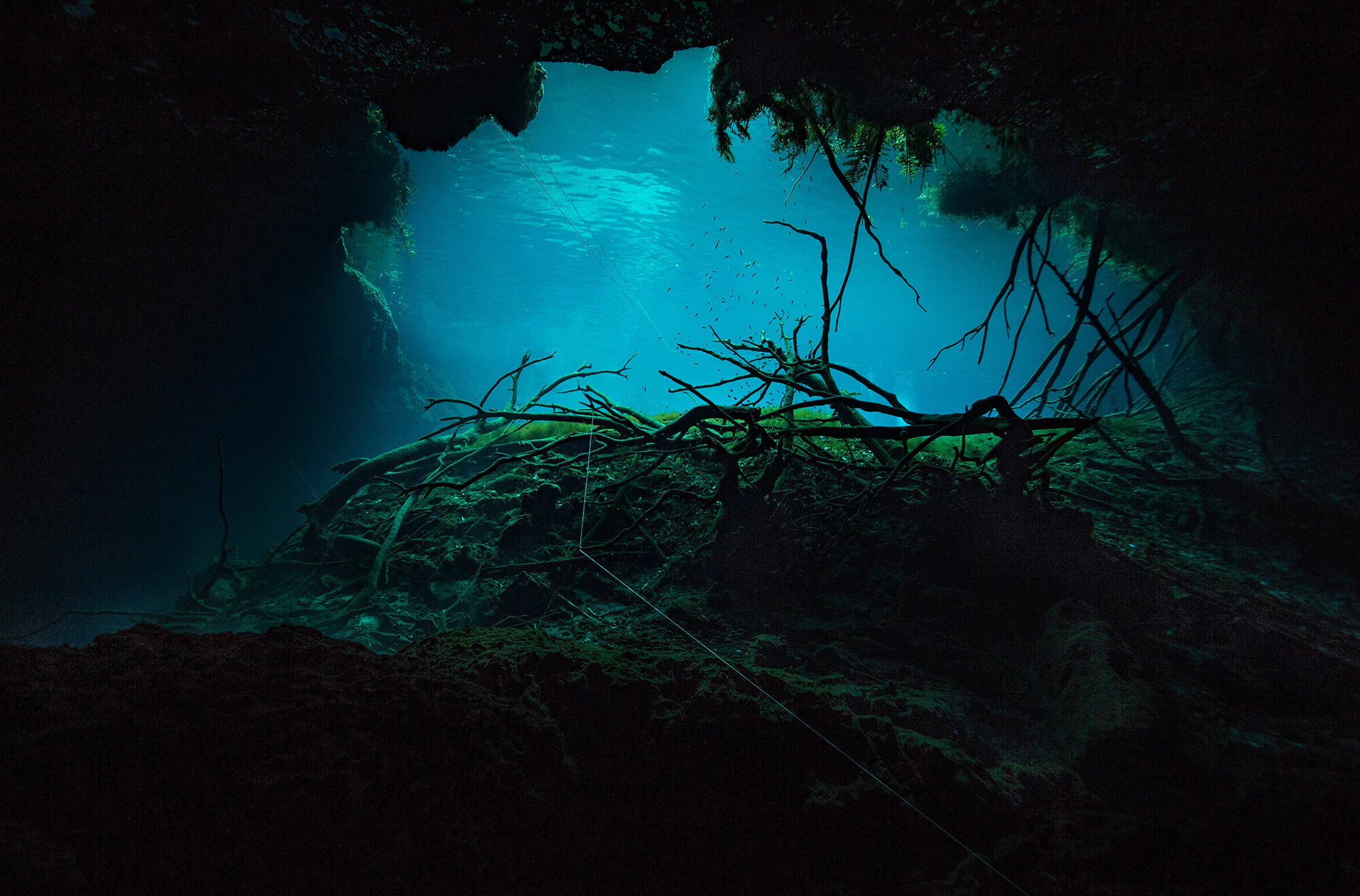
Dive into Tulum’s Caves and Caverns:
For some Tulum is a region of ancient civilization and crumbling ruins. For others, it’s one of the best cave and cavern diving places in the world. Join us as we explore the adrenaline-pumping underworld of Tulum’s cenotes.
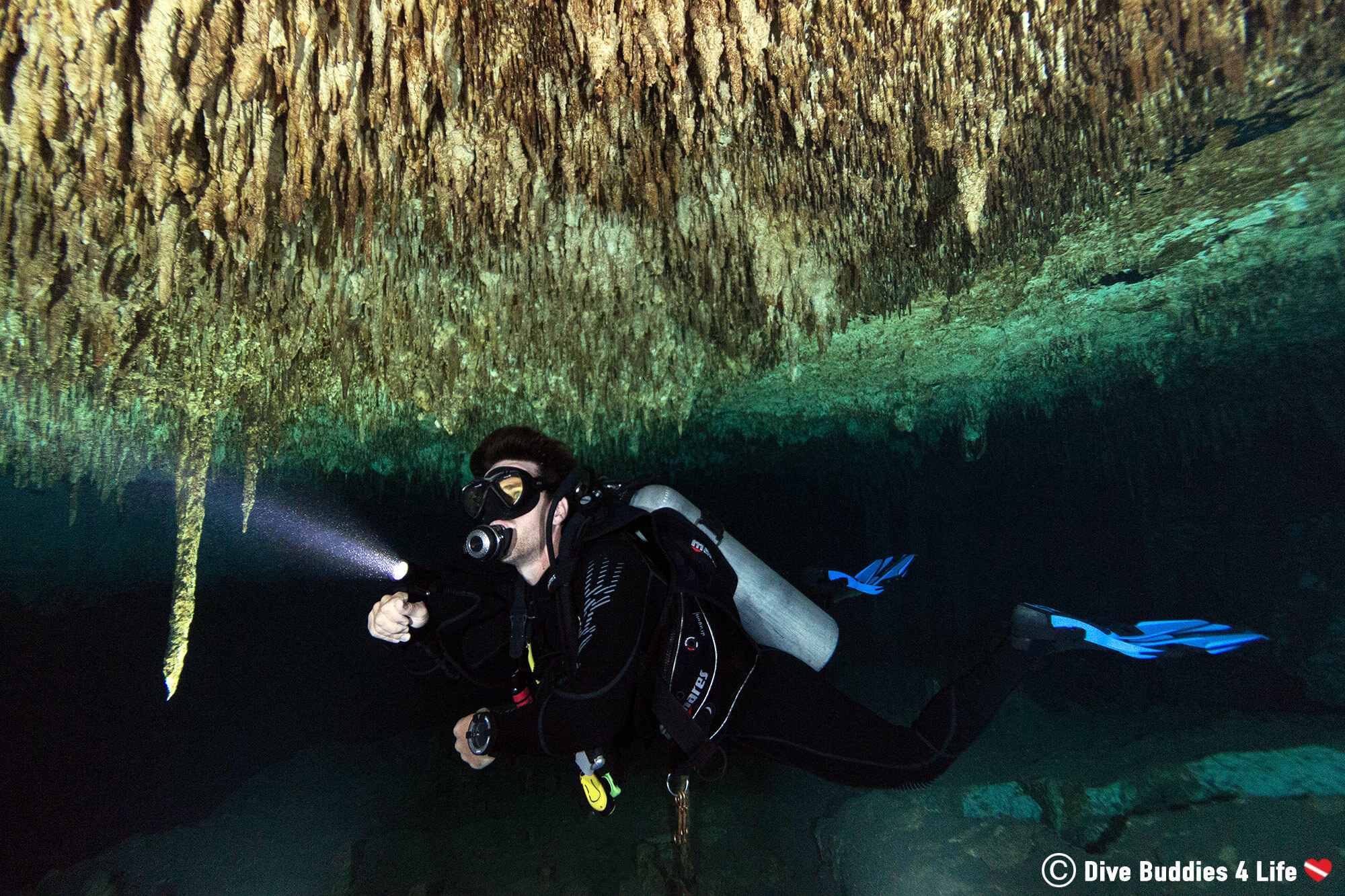
There is much more to Italy than their mouth-watering pasta and the Roman empire. This European nation, rooted in history, has had a long and intimate connection with the sea.
Italy is a boot-shaped country surrounded by the lush blue waters of the Mediterranean. Every year, tourists flock to Italy to enjoy the first-class beaches, vibrant culture, and world-class cuisine. And for those with a profound appreciation for water, there is some supreme scuba diving.
Between what was once the world’s deepest pool – the Y-40 Deep Joy – in the province of Padua – and the western coast of this country, Italy’s scuba diving scene is more than appealing. Outside of Naples divers can explore the submerged city of Baiae. In approximately the 16th century the entire land of Baiae dropped more than six meters below sea level when the underlying magma chamber of this volcanically active region emptied and the grounds dramatically shifted. Today ruins from this ancient city are part of the Underwater Archaeological Park of Baiae (the Parco Archeologico Sommerso di Baia) where diving activities within its borders are now regulated.

Scuba Diving the Underwater City of Baiae
Beneath the waters of the Gulf of Naples are the remains of an ancient Roman civilization. Baiae was once a party city for the capitols rich and famous. Now the city is an Underwater Archaeological Park that visitors can dive.
To the south of Baiae, winding along the Amalfi coast, is another popular diving location. At the tip of the Sorrentine peninsula is the marine protected area of Punta Campanella. Surrounded by the Tyrrhenian Sea this watery wonderland consists of grotto’s, inlets, bays and an abundance of wildlife.
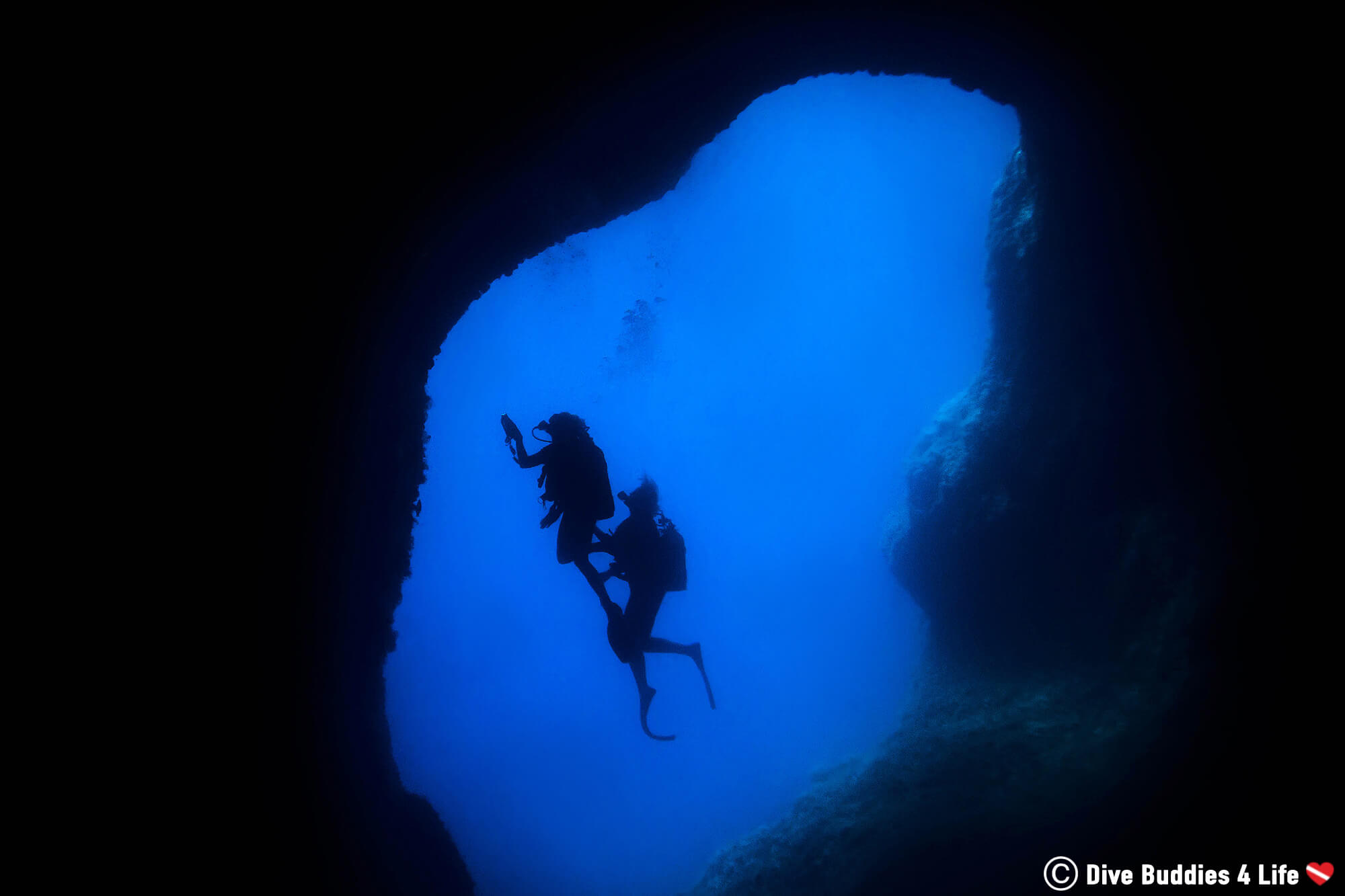
Whether you are looking for some beachy fun in the sun or an action-packed adventure, Europe’s vibrant country of Portugal is one of our favourite diving spots. From the staggering volcanic landscapes of the Azores to the wild waters of Berlengas Islands off mainland Portugal, we are head over fins in love with diving in this country.
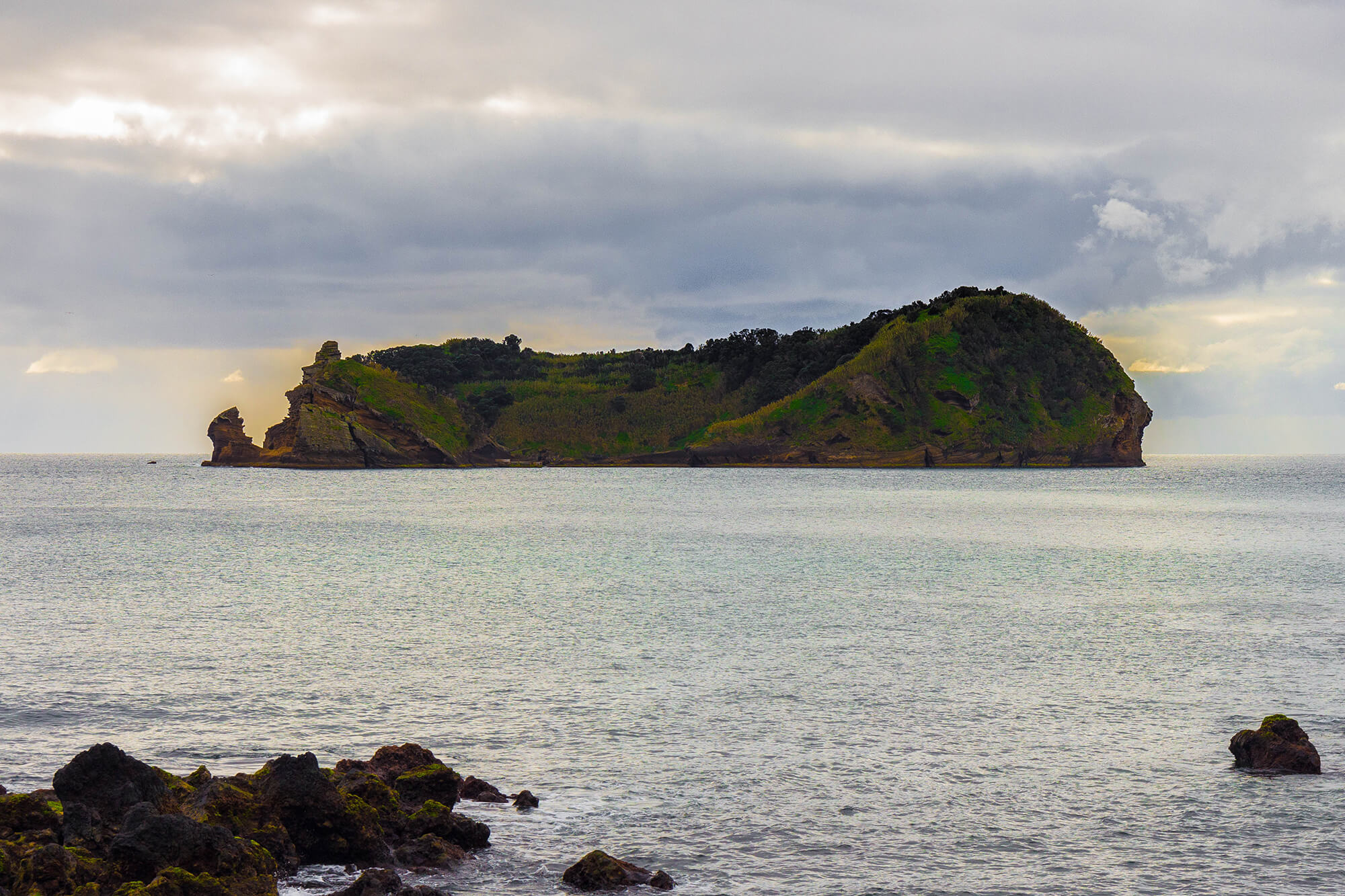
Diving the Azores São Miguel Island
Who would have thought that resting in the middle of the Atlantic ocean, the Azores would be a top Portuguese diving site? With nine volcanic islands to choose from and a plethora of local and offshore diving, this up and coming hotspot is just waiting to be discovered.
Some of our best memories include swimming with giant groupers and seeking out itty bitty macro fauna such as nudibranchs to photograph. We even encountered a massive swarm of pelagic crabs while visiting Berlengas Island. Portugal holds the best of both warm and cold water diving and its scattered islands are locations that afford many breathtaking places for submersion – one that would take a lifetime to truly explore and appreciate.
When it comes to dive focused destinations in the United States, Florida rings in at the top of the list. This southern state has some of the best diving in the country.
One of the state’s most renowned diving is in the Florida Keys, a 190-kilometer (120-mile) stretch of islands that is home to the only living coral reef in the continental US. Geographically the Keys lie along the Florida Straits separating the Atlantic ocean on the east from the Gulf of Mexico on the west. Anyone who has visited the Keys can appreciate waking up and practically rolling into crystal clear waters teeming with fish.
A couple of hours to the north of Miami is another region of Florida known for its diving. West Palm Beach is a dynamic waterfront city home to the Blue Heron Bridge shore diving site. Located on the Intracoastal Waterways (IWC), Blue Heron Bridge is a fantastic place for macro mud diving. With the Gulf Stream a mere stone throw away, at night West Palm is also a top contender for its blackwater diving.
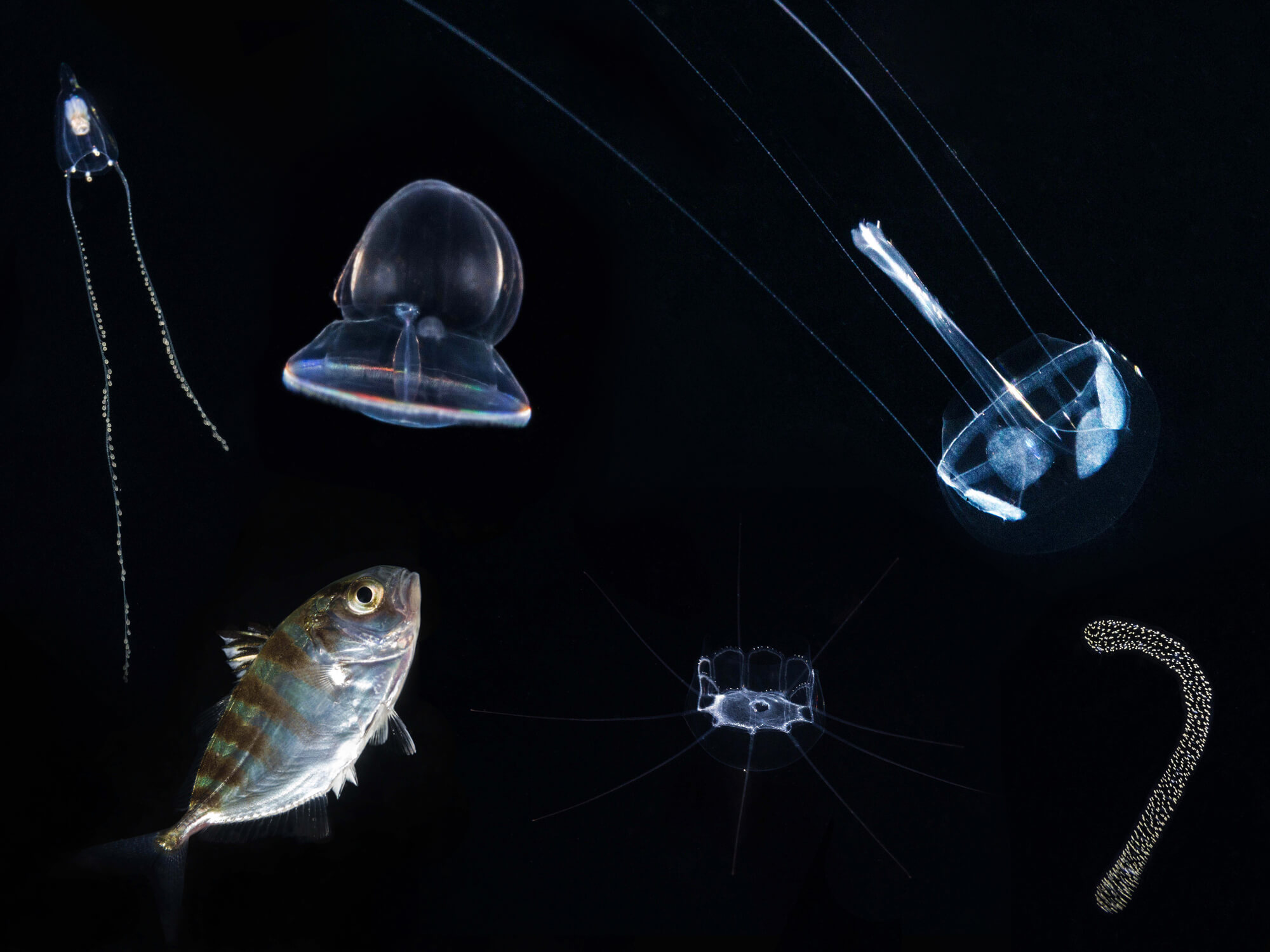
Black Water Diving in Florida
Imagine diving out in the vast open ocean with 180 meters (600 feet) of water between you and the bottom, the current dragging you along at 6.4 kilometers (4 miles) per hour and the swells rocking you up and down… Now imagine doing that in the inky blackness of night.
Like us, if large animal diving is more your speed, even further up the coast from Miami are the shark-infested waters of Jupiter. Here the underwater world isn’t just great – it’s mighty!
Due to depths, consistent sea conditions and proximity to the Gulf Stream, the dive destination of Jupiter displays an abundance of wildlife. This includes the ocean’s apex predator – sharks! Inhabiting and migrating through the area, divers can enjoy high profile species such as Tigers, Hammerheads, Lemons and Bulls.
Cave and cavern country is a third intriguing Florida diving site found on the upper west side of Florida, just south of the panhandle. Limestone formations combined with spring water have created many interesting geological formations in the land which underlie this section of Florida. Because of this, divers from all over the country travel here to experience recreational and technical dives in the incredibly clear spring systems of Ginnie, Blue Grotto and Devil’s Den.
But these springs are not just used by divers. In the winter months, Florida’s West Indian manatee flock certain systems, seeking refuge from the cold in the springs consistent water temperatures.
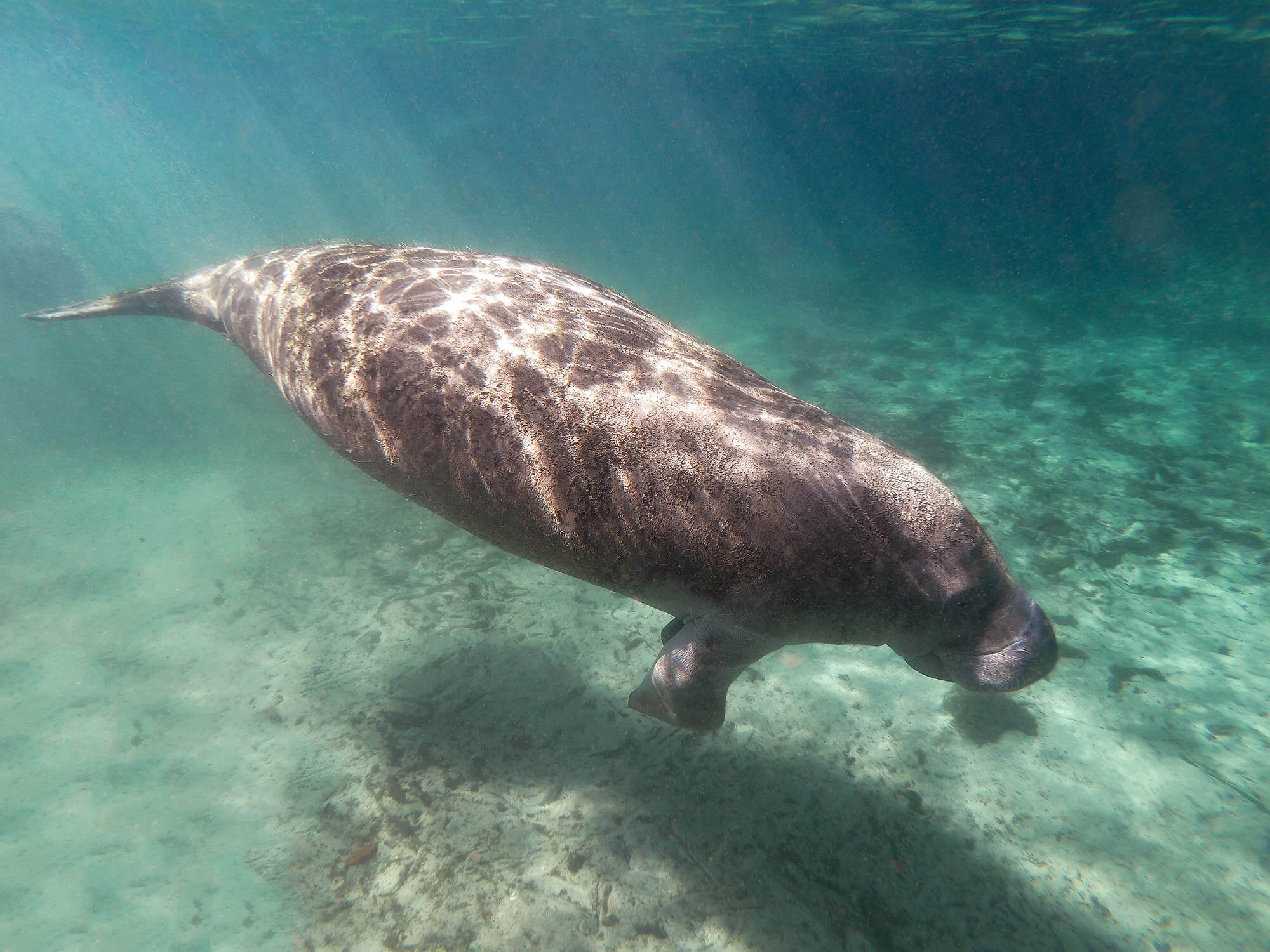
Snorkeling with Manatee’s in Florida’s Springs
Offering topside beauty and underwater magic, escape to Crystal River, one of Florida’s freshwater springs and snorkel destinations to meet one of the most majestic marine mammals on the planet.
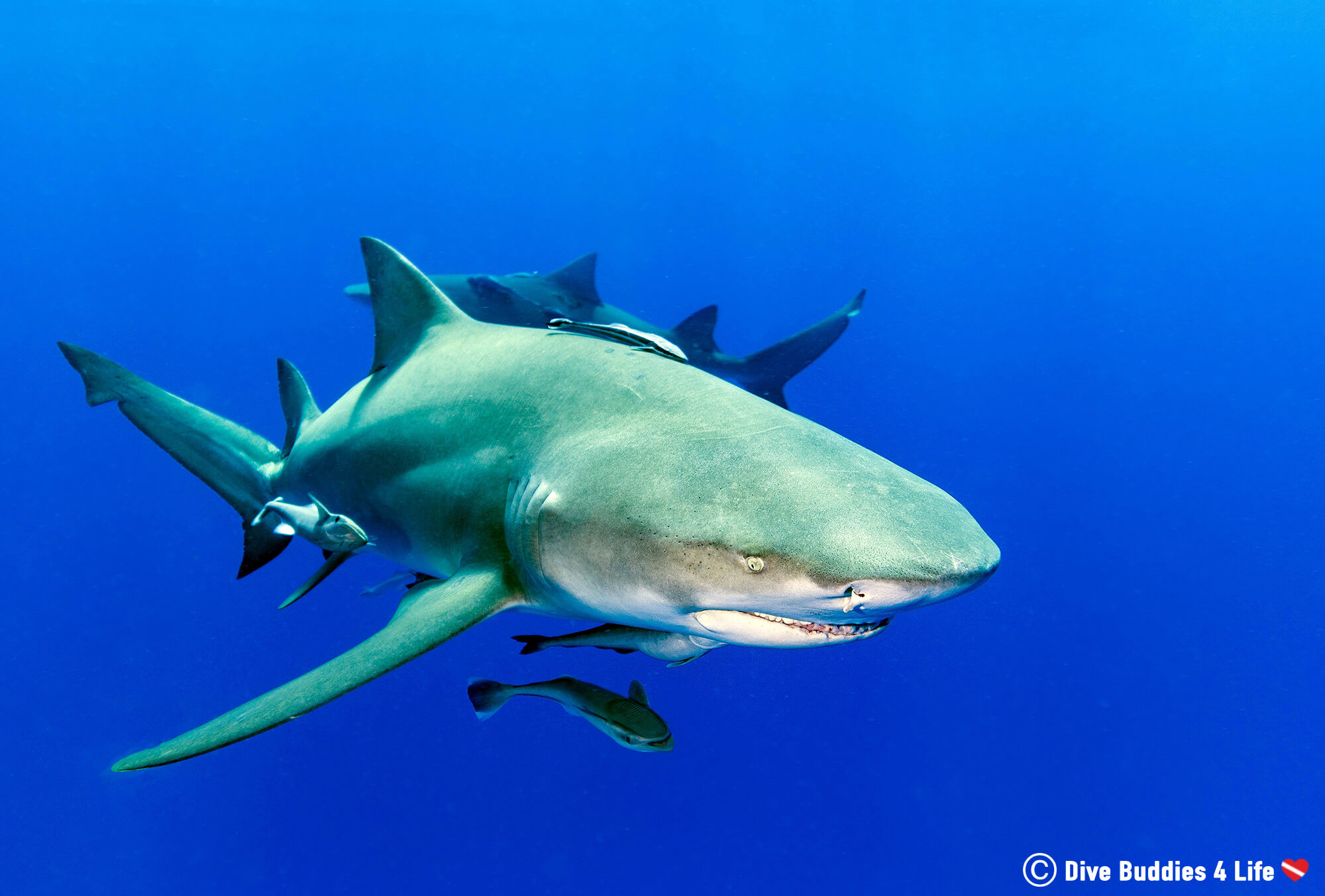
The Canary Islands are Spanish archipelagos 100 kilometers (62 miles) off the coast of Morocco. This archipelago is made up of seven main islands – Tenerife, Fuerteventura, Gran Canaria, Lanzarote, La Palma, La Gomera and El Hierro; and four islets – Alegranza, La Graciosa, Lobos and Montaña Clara. All the Canary Islands are volcanic in origin, and this collection of islands is the perfect example of an oceanic hot spot. Due to their volcanic origin and proximity to the African mainland, the Canaries key features include a sun-soaked arid climate and vast expanses of jet black lava stone.
The rich blue waters surrounding these islands are immaculately clear, boasting visibility as far as 30 meters. That, paired with the volcanic nature of the sea bed, makes this region and encompassing waters a hospitable place for biodiversity to thrive.
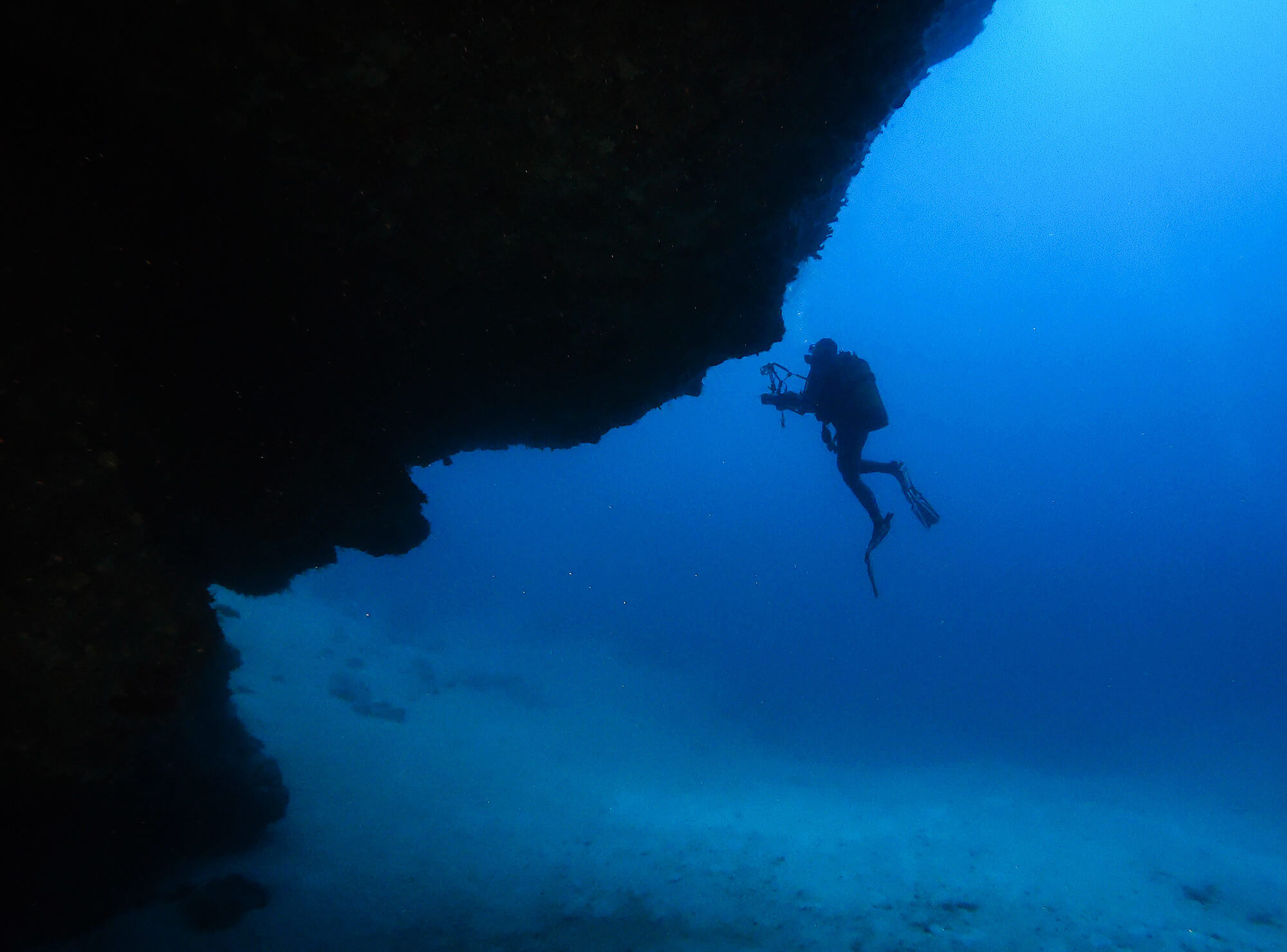
Read More about our Scuba Escape to Lanzarote
The best diving in Europe. Unmatched in Spain. That was just some of the hope-lifting praise I’d read and heard for the dive sites in the Canary Islands. So you can imagine how pumped we were to be spending a few weeks on Lanzarote, scuba diving in what’s considered Europe’s sunny south!
When it comes to scuba diving in the Canaries, divers won’t be spoiled for choice. The seven islands have everything one’s heart could desire. From wrecks and caves to lava reefs and large fauna, the underwater scene is unique for each island.
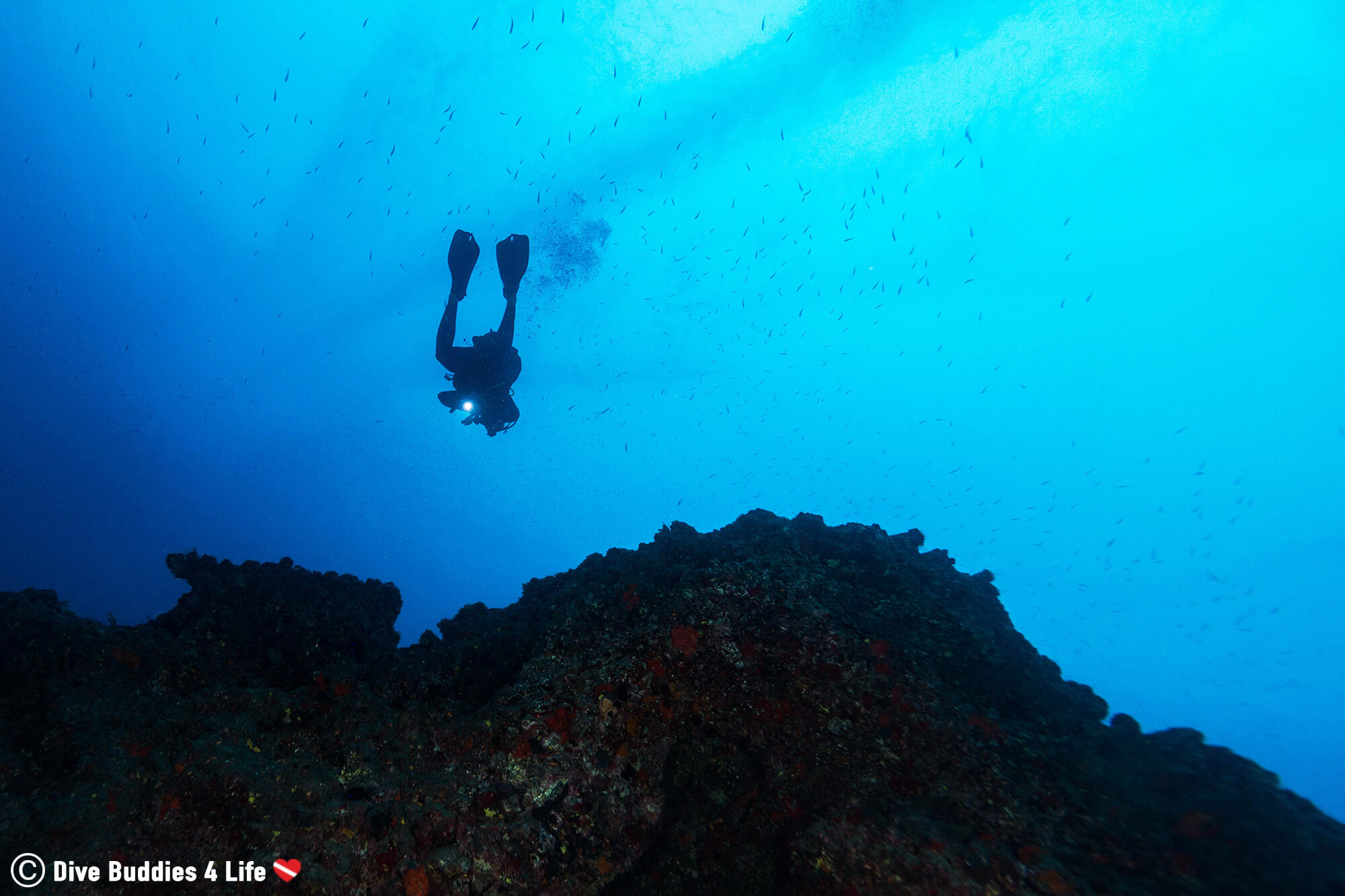
Sitting 40 kilometers from the Arctic circle, Iceland couldn’t be further from your typical dive destination. A country unlike any other, this European island is a place of contrasts – long dark winters offset by summer’s midnight sun, glacier lagoons meeting geothermal hot springs.
The volcanic island of Iceland formed 18 million years ago as a result of a violent and massive movement between tectonic plates. Without getting too much into the earth’s geology, tectonic plates are basically, a layer of land deep down beneath the surface that “floats” on the planet’s magma core. Where the plates meet we tend to see wondrous geological phenomena such as huge expanses of mountain ranges (the Andes, the Rockies, the Himalayas), deep ocean trenches (the Mariana Trench, the Puerto Rico trench, the Java trench), and volcanic activity (the Pacific Ring of Fire). Iceland is one of those lucky countries that straddles two tectonic plates.
The Silfra is a large spreading crack that opened up in Iceland, along the North American and Eurasian plate lines, after a major earthquake. On top of being a one-of-a-kind rift, what makes the Silfra so appealing as a dive destination, is that it is filled with ice-cold crystal clear spring water trickling down from the Langjökull glacier.
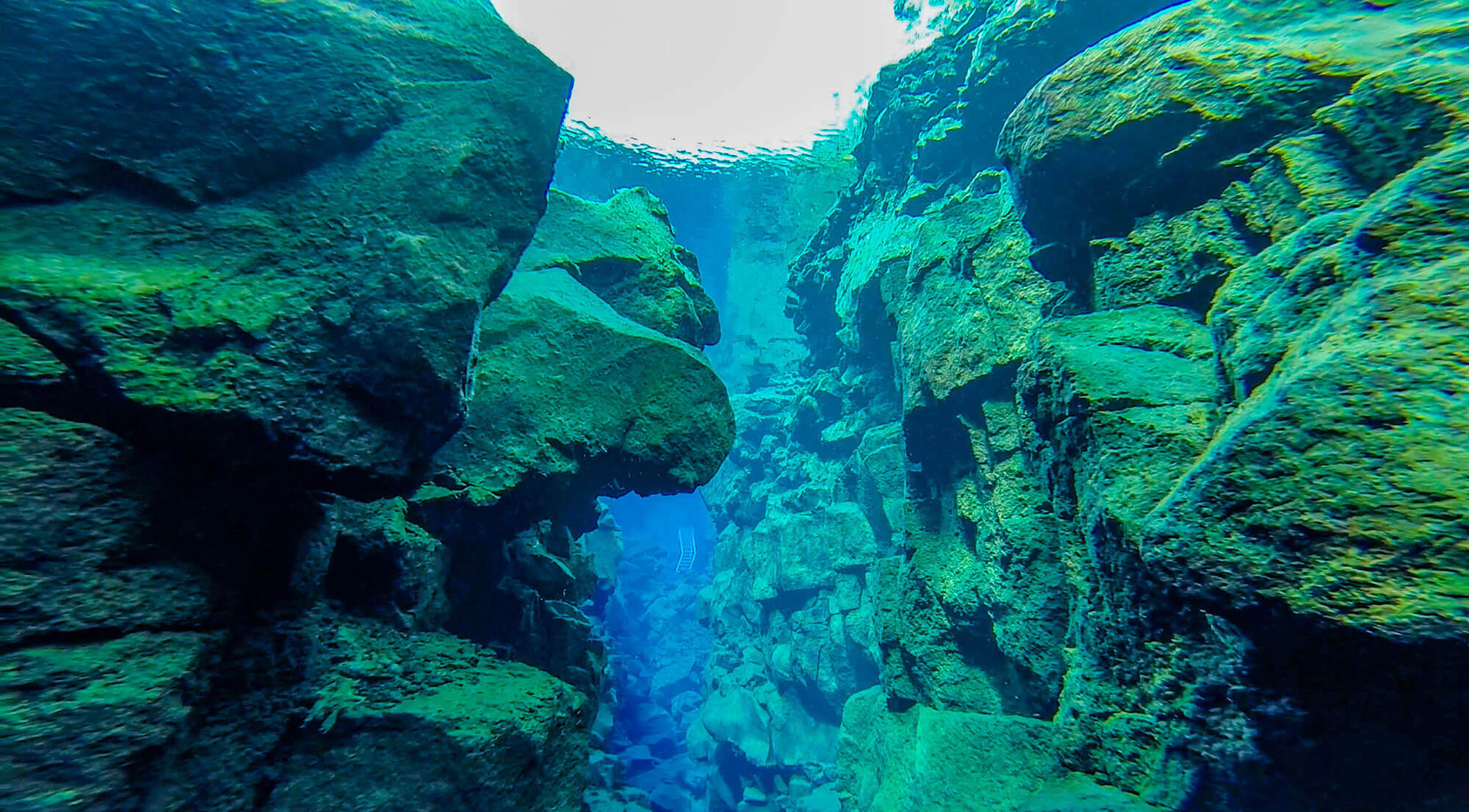
Read More on Scuba Diving the Silfra Fissure:
Iceland may be close to the Arctic circle, but that doesn’t stop divers from all over the world from visiting this country and submerging into the coldest and clearest water on the planet.
Thanks to the earth’s tectonic plate geology and the incredible water clarity, this unique place has scuba divers and snorkelers from all over the world, braving the frigid temperatures just to experience the world-renowned Silfra.
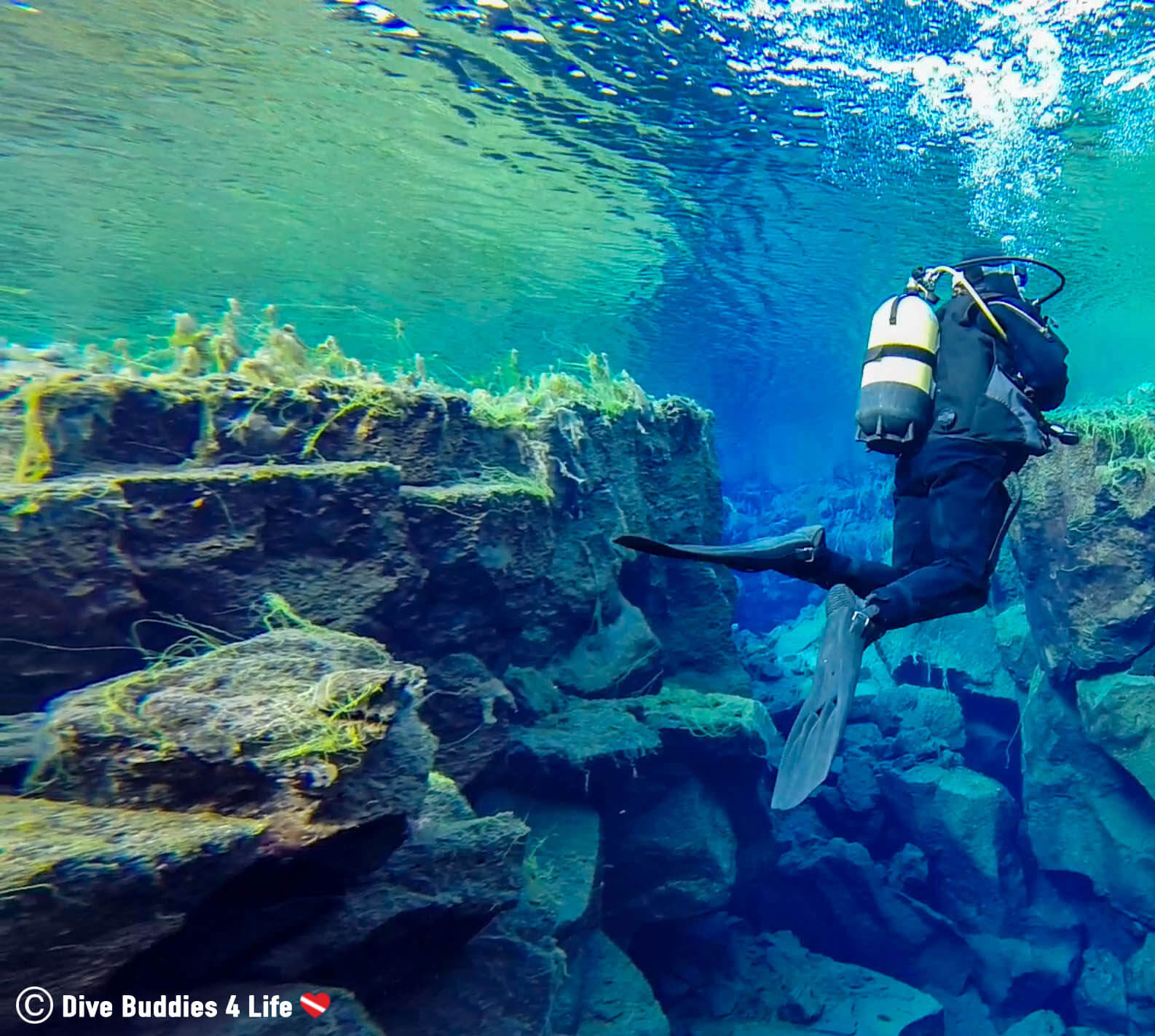
There is a reason that the Fathom Five National Marine Park in Tobermory is one of the best dive sites in Canada and arguably the world. Boasting clear blue freshwater from Lake Huron, this diving site, located at the tip of the Bruce Peninsula, is home to an infinite amount of historic shipwrecks peppered across the lake bed.
Tobermory is a cold water divers paradise. Like many of the world’s top dive locations, most of the wrecks in Canada’s first National marine park are accessed by charter boat. The Arabia, the Niagara II and the Sweepstakes are just a handful of the beautiful sunken vessels divers will have the opportunity to explore – some dating back to the 19th and 20th centuries. The Alice G is another that can even be reached from shore.
With tanks or without, diving enthusiasts travel to Ontario and can’t help but fall in love with the many submerged vessels resting in 30-meter (100 foot) water clarity.

The dive-world is a big beautiful place. Over the years, what kind of scuba destinations have you visited and fallen in love with?
Writers Note: This post may contain affiliate links. We will make a small commission if you make a purchase through one of these links, at no extra cost to you. See full disclosure and disclaimer policy here.

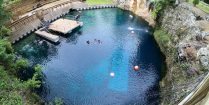
Florida may be known for its ocean coast, but this southern state is also home to some of the best spring and cave systems in the country.

Submerge yourself into Bonaire's underwater world with this scuba bucket list. It will leave you wanting more from the coral capital of the Caribbean.

Iceland may be close to the Arctic circle, but that didn't stop us from diving into the clearest water on the planet.

As one of the sunshine states top shore diving destinations, Blue Heron Bridge offers some of the best diving in Florida. Mud, beaches, wrecks and small critters, no matter where you dive under the bridge, there is so much to see, explore and photograph.
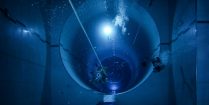
When in Italy make sure to stop at the world's deepest pool, Y-40 the Deep Joy and try your hand at scuba or freediving for a bucket list experience.

For fresh bubbles, magnificent viz and spectacular wildlife encounters, now is the perfect time to explore the volcanic island of Lanzarote.
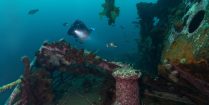
Do you enjoy cold water wreck diving? This dive destination will let you experience the best shipwrecks and scuba diving opportunities on the Canadian east coast.
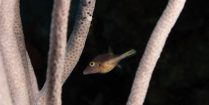
Whether your diving with turtles or admiring coral reefs, get ready to be wowed by the underwater beauty of Bonaire, the shore diving capital of the Caribbean.

Sitting pretty right next to the gulf stream, Jupiter is known as one of Florida's best shark diving location. Drift along in the current as you enjoy an up-close encounter with the ocean's apex predators.
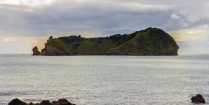
Who would have thought that resting in the middle of the Atlantic ocean, the Azores would be a top Portuguese diving site? With nine volcanic islands to choose from and a plethora of local and offshore diving, this up and coming hotspot is just waiting to be discovered.

Beneath the waters of the Gulf of Naples are the remains of an ancient Roman civilization lost to the seas of time and guess what? You can dive into it!
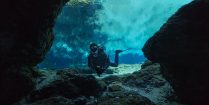
The crystal clear water of Ginnie and Devil’s spring systems is arguably some of the best freshwater diving in all of Florida. As a scuba diver heading to the sunshine state, make sure to put this spot on your travel itinerary!
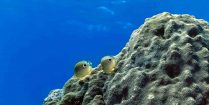
The tropical oasis of Key Largo is a scuba diver's delight. Night dive, reef dives, and wreck dives are all right at your fingertips ready to be explored.
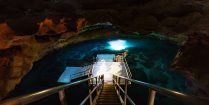
Dark, ancient and mysterious are a few words that can be used to describe the Devil's Den cavern in Florida. Find out what it was like to visit this world-class tourist destination and dive this prehistoric spring system.
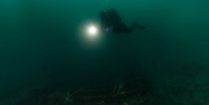
Backroll into to the cold water world of Portugal's Berlengas Island Natural Reserve. Located off the coast of Peniche, this underwater paradise will have you have you gurgling with excitement into your regulator.

Offering topside beauty and underwater magic, escape to Florida's freshwater springs and snorkel with one of the most majestic marine mammals on the planet.
